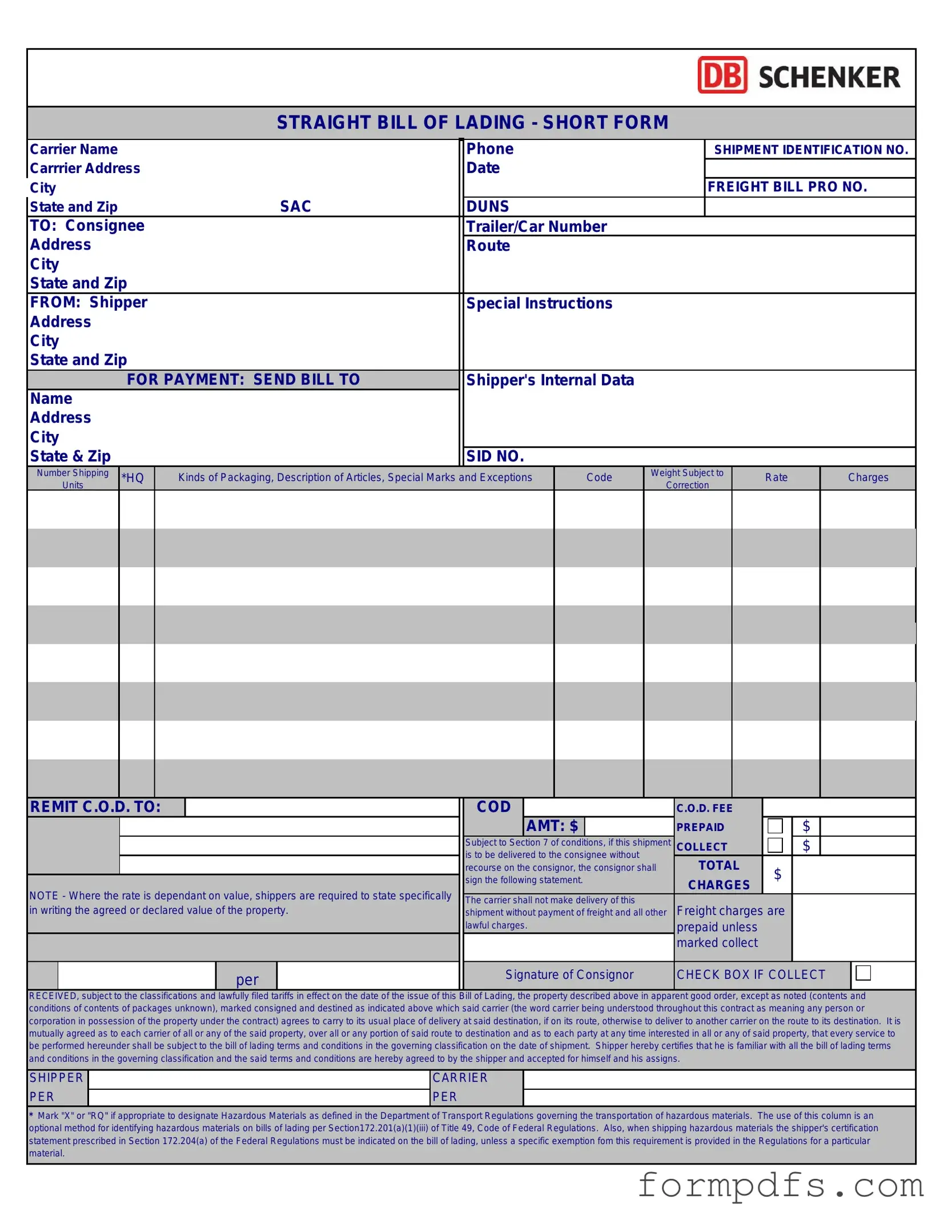What is a Straight Bill of Lading?
A Straight Bill of Lading is a document issued by a carrier that serves as a receipt for goods being transported. Unlike other types of bills of lading, it is non-negotiable, meaning that the goods can only be delivered to the named consignee. This type of bill is often used when the shipper and the consignee have a direct relationship and there is no need for the transfer of ownership during transit.
What are the key components of a Straight Bill of Lading?
Key components include the names and addresses of the shipper and consignee, a detailed description of the goods, the shipping route, and any special instructions. It also includes the date of shipment and the carrier’s information. This document acts as proof of the contract of carriage and outlines the responsibilities of both the shipper and the carrier.
How does a Straight Bill of Lading differ from a Negotiable Bill of Lading?
The primary difference lies in the transferability. A Straight Bill of Lading is non-negotiable, meaning it cannot be transferred to another party. In contrast, a Negotiable Bill of Lading can be endorsed and transferred to others, allowing for the ownership of the goods to change hands during transit. This makes the Straight Bill more straightforward but less flexible for transactions.
When should I use a Straight Bill of Lading?
A Straight Bill of Lading is best used when the shipper and consignee have a strong relationship and there is no need for the goods to change hands while in transit. It is commonly used in situations where the payment has already been made or where the transaction is straightforward and does not require additional parties.
What are the advantages of using a Straight Bill of Lading?
Using a Straight Bill of Lading simplifies the shipping process. It provides clear documentation that ensures the goods will be delivered directly to the intended recipient without the need for additional endorsements. This can reduce the risk of fraud and streamline the delivery process. Additionally, it can help in maintaining a clear chain of custody for the goods being transported.
What happens if the consignee is not available to receive the goods?
If the consignee is unavailable, the carrier may hold the goods until the consignee can be reached. The carrier is typically not authorized to release the goods to anyone else without the consignee's consent, due to the non-negotiable nature of the Straight Bill of Lading. This can lead to delays, so it is crucial for consignees to be prepared for the delivery.
Can a Straight Bill of Lading be amended after it has been issued?
Amendments to a Straight Bill of Lading can be made, but both the shipper and the carrier must agree to the changes. It is essential to document any modifications clearly to avoid confusion or disputes later on. Communication between all parties involved is critical to ensure that everyone is on the same page regarding the shipment details.
Is a Straight Bill of Lading legally binding?
Yes, a Straight Bill of Lading is a legally binding document. It serves as a contract between the shipper and the carrier, outlining the responsibilities and liabilities of each party. In the event of a dispute, this document can be used as evidence in legal proceedings to clarify the terms of the agreement.
Where can I obtain a Straight Bill of Lading form?
A Straight Bill of Lading form can typically be obtained from freight carriers, shipping companies, or online resources that provide shipping documentation. It is important to ensure that the form you use complies with the relevant regulations and is properly filled out to avoid any issues during transportation.
